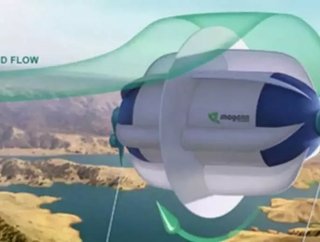Flying Wind Turbines' 'High' Energy Potential

Researchers estimate that high altitude winds can provide 100 times more energy than currently needed to power the entire planet! The only problem is just how to tap that renewable resource. From kite-mounted to floating wind turbines, engineers are getting very creative in figuring out ways to harness high altitude wind power.
Representatives at the National Renewable Energy Laboratory believe that high altitude wind turbines will make their mark in the world of alternative energy within the next ten years.
The allure of tapping into high-altitude wind power is due to higher wind speeds than can be captured at ground level. The world’s most powerful winds circulate high in the jet streams found between four to ten miles above ground. Wind speeds at this height reach 100 miles per hour regularly.
At high altitudes, wind speed increases due to less ground friction. Theoretically, wind energy grows exponentially with increased speed. When wind speed doubles for instance, the energy that it holds and can be harnessed increases eight-fold.
SEE RELATED STORIES IN THE WDM CONTENT NETWORK
A Twist on the Traditional Wind Farm
NRG Eyes World's Largest Wind Farm
Germany Gets its First Offshore Wind Farm
However, the problem limiting high altitude wind turbines is not the technology, but rather practicality. Currently, federal airspace restrictions limit power generators like flying wind turbines to the 2,000 feet and below range so as not to interfere with commercial and military air traffic.
Adam Rein of Boston-based Altaeros Energies claims his company has calculated winds at the 2,000 feet marker that are up to 20 times stronger than the winds a typical land-based turbine of 350 feet in height can reach.
“They are projecting crazy numbers. I’m not saying that it’s true. But it’s really the lowest, the cheapest energy source,” says Cristina Archer, an atmospheric scientist at California State University in Chico. Archer claims “there is no doubt anymore” that high altitude winds will be tapped for energy.






